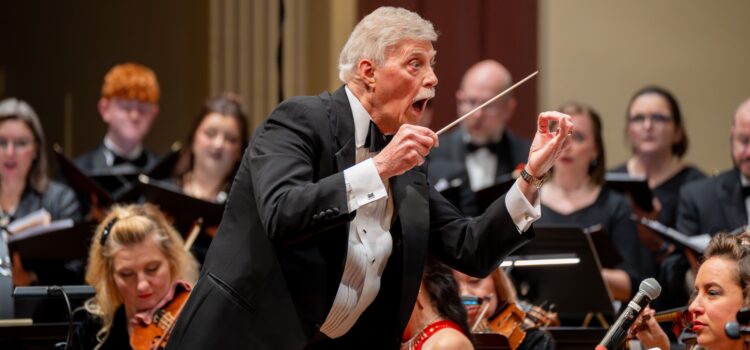By CB Adams
There’s a reason that “BBC Magazine” named the Bach Society of St. Louis’ Christmas Candlelight Concert as one of their top-20 live holiday events in North America and why I named it one of the top-five 2024 recommendations for my STL Stage Snaps Recommends.
In contrast to all the hustle and bustle and jingle and jangle of holiday entertainment options, the Candlelight Concert stands out as a sublime respite, a reminder of the powerful analogue combination of human voices singing songs with rich depth and emotion, accompanied by a talented orchestra.
It is not hyperbole to call the Candlelight Concert a St. Louis holiday tradition. It has secured its place since 1951 with a Christmas event distinguished by fine musicianship and an intelligent, well-curated program of music old and new, familiar and should-be-familiar. With a sell-out on its second performance and nary an empty seat in the first, it’s proof positive that there’s interest and support for concerts filled with something more substantial than the sugar rush of holiday pop tunes (no shade on Mariah Carey, but she’s not all I want for Christmas).
There were approximately 90 singers and orchestra musicians filling the stage of the beautiful 560 Music Center in University City. As they do every year, the chorus surrounds a venue, electric candles in hand, and processes to the stage singing (this year) “Come, Thou Long-Expected Jesus.” This is a simple and effective way to begin this immersive performance – immersive without stagecraft, special effects or amplification – and is a hallmark of the annual performance that balances contemplative and celebratory music.
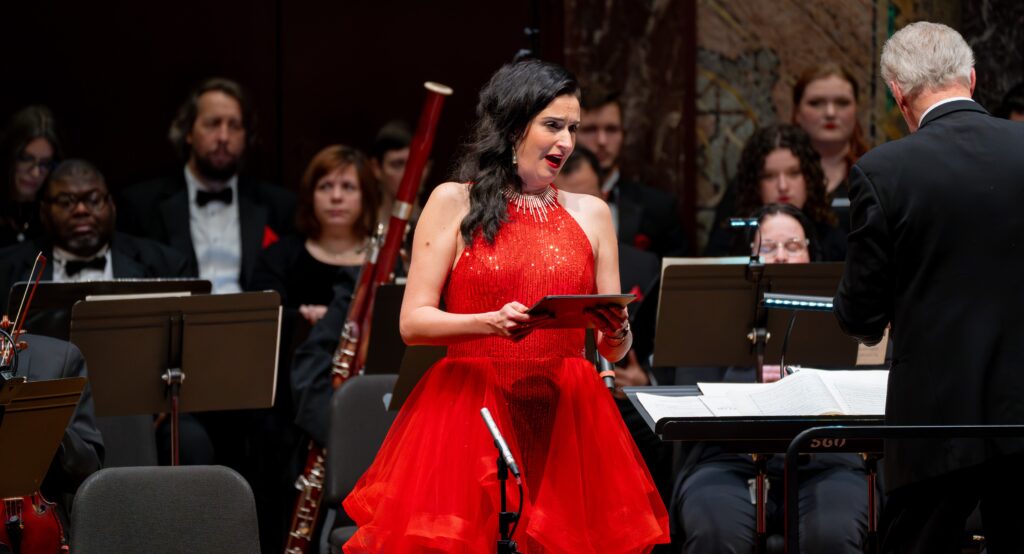
A highlight and the centerpiece of this year’s program was Antonio Vivaldi’s “Gloria in Excelsis Deo,” one of his most celebrated sacred works. A. Dennis Sparger conducted the orchestra and elicited from the orchestra the 28 minutes of exuberance and lyrical beauty in this Baroque classic’s 12 movements.
Renowned for its dynamic contrasts, rich harmonies and virtuosic demands, Vivaldi’s “Gloria” is rightly celebrated for its evocation of celestial majesty and human devotion – and Bach Society’s choir and orchestra delivered it with excellence.
The piece featured the talents of two soloists: Josefien Stoppelenburg, soprano, and Kate Tombaugh, mezzo-soprano. Their performances individually and together were remarkable for their seamless interplay of virtuosic precision and expressive phrasing that captured the joy and devotional intensity of the piece, even if sometimes overwhelmed by the orchestra.
The highlights were Stoppelenburg’s radiant solo in the lyrical “Domine Deus,” a tender dialogue between voice and oboe (beautifully performed by Eileen Burke) and Tombaugh’s solo in “Domine Deus, Agnus Dei.” Tomabaugh delivered with nuance and passion the rich alto line set against a somber backdrop of strings. The two soloists were well-paired for the effervescent “Laudamus te” duet that brimmed with agility and charm.
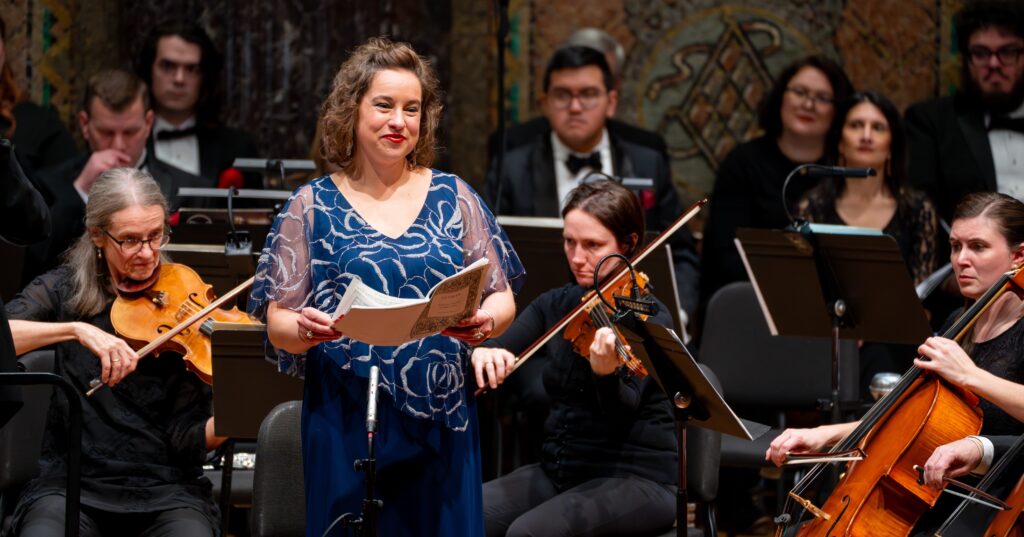
After an audience sing-along of “Joy to the World,” (no review necessary), the second “half” of the program of approximately 90 minutes comprised a world-tour with eight carols from Ireland, England, Italy, Ukraine, Poland and Wales. This portion began with the delightful “Noel!” from Karen Marrolli’s “Light of Peace” album. The choir, backed with a rich orchestration, delivered a joyful, uplifting rendition with an elegant, spirited blend of classical and contemporary influences.
Also noteworthy was the arrangement by Elaine Hagenberg of the well-worn “Wexford Carol.” Hagenberg beautifully reimagined this traditional Irish carol with lush harmonies, sensitive orchestration and intricate counterpoint. The choir’s performance provided a serene, reflective quality to the piece, capturing its historical roots and timeless beauty.
For “Gesu Bambino,” Tombaugh and Stoppelenburg retook the stage to perform Pietro Yon’s arrangement. His lush and expressive setting showcases the Italian carol’s emotive melody, and the singers fully captured his lyrical choral writing with an authentic reverence and celebration of the nativity.
Conductor Sparger introduced the pairing of David Mooney’s “Dublin Bells Carol” with the better-known “Carol of the Bells” by Mykola Leontovich. Sparger described how, on Christmas Eve, all the bells of Dublin’s more than 200 churches and two cathedrals ring out. Mooney was inspired by the sounds of 36 of those bells to create his lively, captivating “Dublin Bells Carol” that blends Irish folk influences with traditional Christmas themes. The choir was up to the challenge of creating the sounds of the rhythmic and vibrant melody.
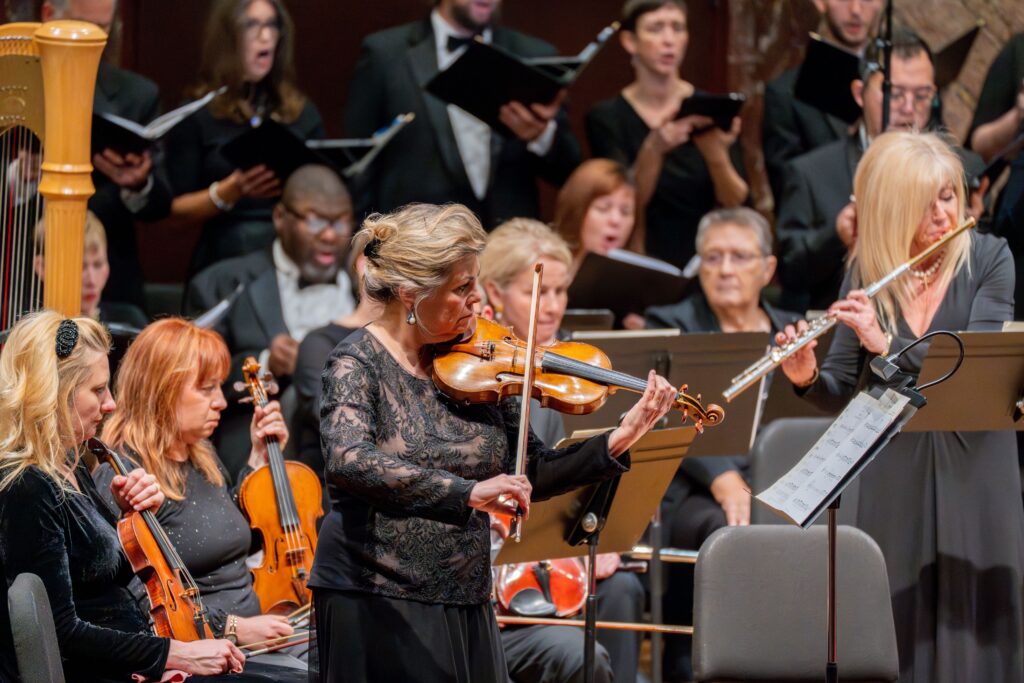
The orchestra then segued seamlessly into Peter Wilhousky’s arrangement of “Carol of the Bells.” Wilhousky’s dynamic and exhilarating setting intensifies the original Ukrainian carol with rapid, cascading choral phrases and vibrant harmonies.
The Bach Society’s Candlelight Christmas performance shares a similar sense of reverence and holiday spirit with the renowned Christmas at King’s College. Both offer a captivating evening of choral excellence and festive beauty. Both performances showcase stunning vocal harmonies and intricate orchestration, evoking a sense of peace and joy that resonates deeply. And both are – or should be – cherished holiday traditions.
The Bach Society of St. Louis Christmas Candlelight Concert was performed on December 18-19 at 560 Music Center.
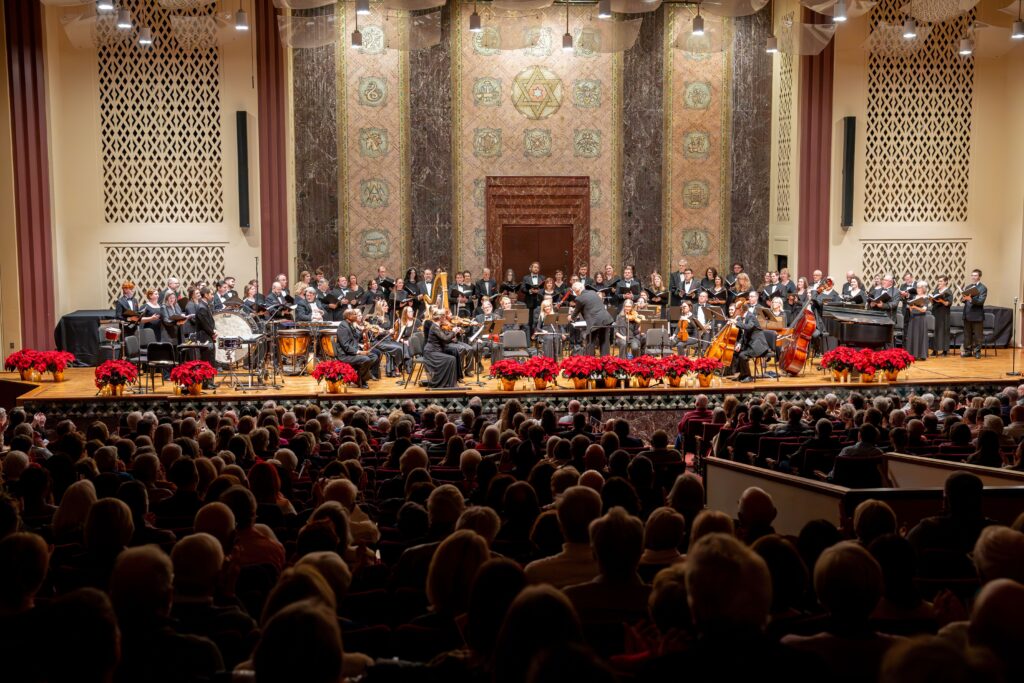

CB Adams is an award-winning fiction writer and photographer based in the Greater St. Louis area. A former music/arts editor and feature writer for the St. Louis Globe-Democrat, his non-fiction has been published in local, regional and national publications. His literary short stories have been published in more than a dozen literary journals and his fine art photography has been exhibited in more than 40 galley shows nationwide. Adams is the recipient of the Missouri Arts Council’s highest writing awards: the Writers’ Biennial and Missouri Writing!. The Riverfront Times named him, “St. Louis’ Most Under-Appreciated Writer” in 1996.

